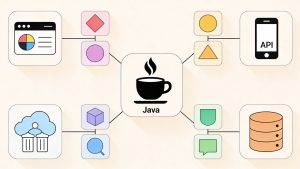Staying ahead in delivering reliable software requires continuously evolving quality assurance strategies. A recent survey of more than 100 development teams in North America and Europe highlights how QA and testing practices are transforming in 2025—including the surging adoption of AI-powered tools, changing priorities, and emerging challenges faced by modern tech organizations.
Key Survey Findings
Rapid Growth in AI Adoption
- 68% of surveyed teams now utilize AI-driven solutions for critical QA activities, including regression, smoke, and risk-based testing.
- Nearly half (45%) plan to expand their use of AI-assisted QA over the next year.
- Reduced manual workload and accelerated test cycles are cited as leading benefits by participating teams.
Continued Emphasis on Regression Testing
- Regression workflows consume an average of 40–50% of QA team resources.
- 60% of teams focus on automating regression testing with AI to allow manual testers more time for exploratory and complex scenario validation.
Integration with CI/CD Pipelines
- 72% of organizations have embedded automated QA into their CI/CD processes.
- Those leveraging AI in CI/CD see release cycles sped up by 30–40% compared to manual-first approaches.
Persistent Challenges
- Flaky, unreliable tests are reported as ongoing concerns by 55% of respondents.
- 33% struggle to recruit and retain staff skilled in managing advanced AI testing tools.
- Multiplatform coverage and support for varied environments remain significant hurdles.
ROI Metrics and Quality Improvements
- Enterprises using AI-based QA expect regression test maintenance costs to drop by as much as 50%.
- 40% state that software releases feature fewer post-launch defects, signifying measurable quality gains.
Emerging Trends and Regional Highlights
AI Usage Is Becoming Mainstream
Machine learning is now integral to test prioritization, adaptive case management, and predictive defect analysis. QA teams are shifting to data-driven workflows, harnessing algorithms to anticipate issues and optimize testing efficiency.
The Changing Role of Human Testers
With automation handling repetitive tasks, QA professionals increasingly focus on strategy creation, AI oversight, and exploratory testing where context and creativity matter most.
Differences Between North America and Europe
- In North America, 70% of teams use AI QA tools in at least one production pipeline.
- In Europe, adoption is growing quickly especially in Germany and the UK with emphasis on compliance/regulatory testing.
Looking Ahead: The Future of QA
The next phase in software QA will see predictive analytics and generative AI automatically create, execute, and optimize test cases. AI integration with monitoring systems will enable real-time, preemptive defect detection, while self-healing automation will minimize maintenance and boost reliability across the development lifecycle.
Read more such articles from our Newsletter here.



